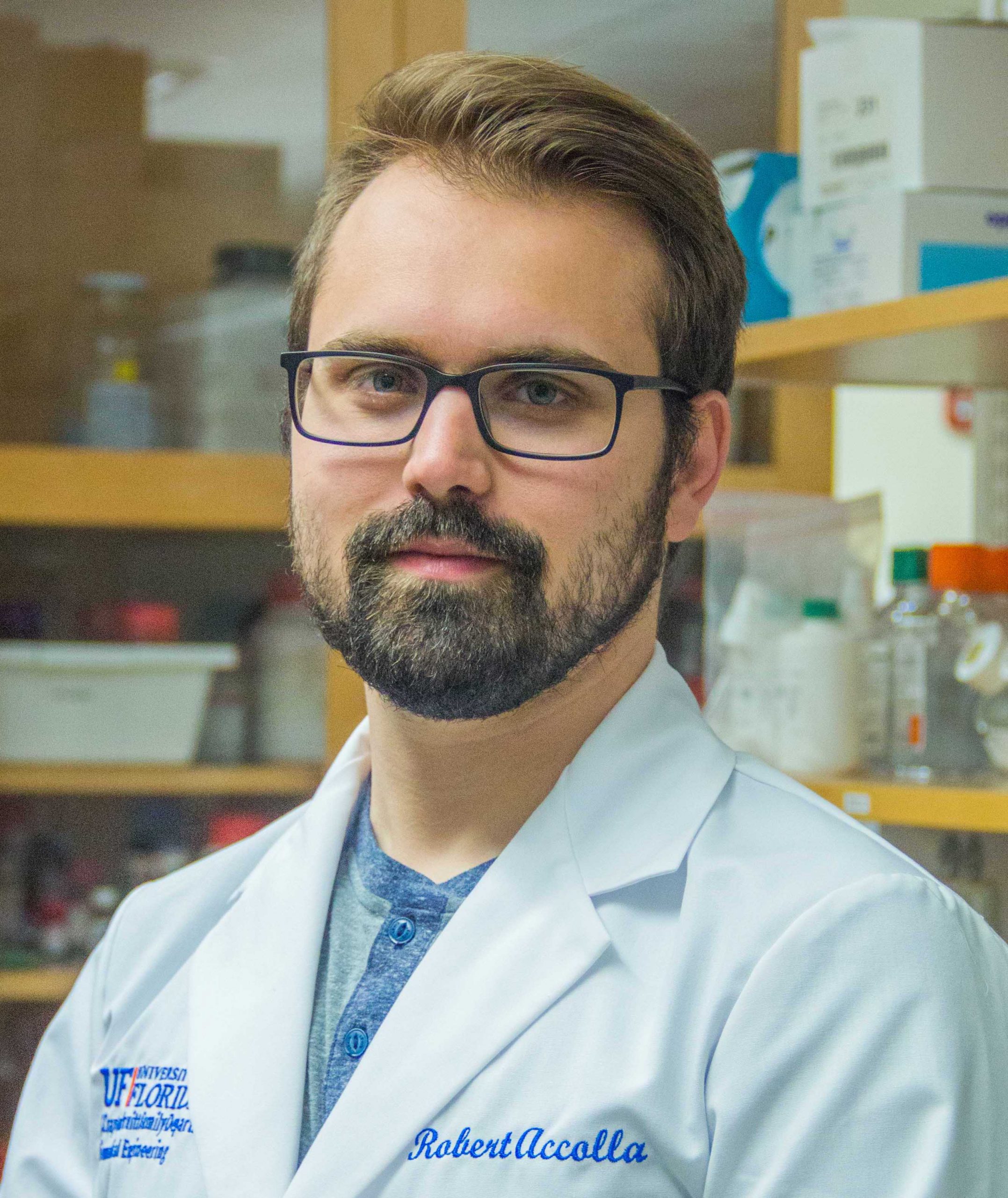Robert Accolla, Ph.D. candidate in the Stabler lab, received a National Institutes of Health (NIH) Ruth L. Kirschstein National Research Service Award (NRSA) Individual Predoctoral Fellowship for his project titled, Engineering Modular Oxygen-generating, Pro-vasculogenic Biomaterial Platforms for Cell-Based Therapies.
The prestigious fellowship covers full tuition, stipend, and educational expenses. Accolla’s mentor on the project is professor Dr. Cherie Stabler.
The overall impact of this study is the creation of a clinically-scalable system for improving long-term engraftment and function of cell-based therapies for type 1 diabetes mellitus through introduction of a robust oxygen-generating material and vessel-promoting scaffolding.
Tissue-engineered, cell-based therapies present a viable solution to treating or curing chronic disease by replacing lost functions or assisting the body in assembling replacement tissue. Though previous work has demonstrated the potential of cell-based constructs for these applications, many are prevented from scaling to a clinically-relevant level due to restrictions on oxygen and nutrient diffusion.
Particularly, as graft size increases, oxygen gradients are exacerbated, and more time is required for full vascular integration of the implant. Two promising approaches that could alleviate these issues are: 1) creating biomaterials capable of generating oxygen at the site of the implant and 2) the promotion of a robust and functional vasculature to provide long-term support for transplanted cells.
The importance of tissue oxygenation and its relation to vascularization has been recognized in previous studies; however, previous attempts to supply gaseous oxygen or generate complex, directed vascular structures have failed to provide a clinically-relevant solution. In the Stabler laboratory, the team has sought to generate oxygen in situ through the encapsulation of calcium peroxide (CaO2) within an organosilicon matrix. Their published results have established this material’s capacity to release physiologically relevant oxygen for up to 30 days. This continuous release of oxygen from a planar disk geometry provided support for insulin-producing cells, leading to increased cell survival and insulin responsiveness in vitro and in vivo using a non-degradable hydrogel platform.
Due to the strict dimensional constraints of the existing platform and the rigid oxygen generation kinetics, translation of this material to other applications has been greatly hindered. To improve the flexibility of this material platform, Accolla proposes transitioning to a modular, microbead geometry. He plans on modifying the previously established oxygen-generating material by applying novel fabrication techniques to yield a composite platform with enhanced modularity in oxygen release.
Recognizing that these novel materials’ oxygen release is finite, he will concurrently seek to direct the formation of competent, well-organized vascularization for durable sustainment of cellular nourishment. To achieve this goal, he will investigate the optimal pore size and geometry that supports angiogenesis through the 3D printing of defined porous scaffolding. Accolla seeks to use this platform for improving endogenous vessel formation as well as in vitro pre-vascularization of novel bio materials.
